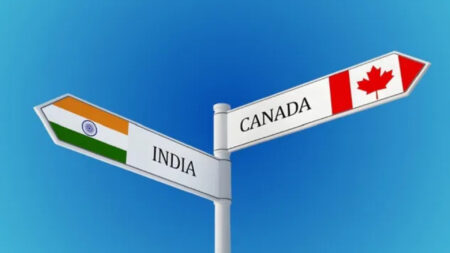On Thursday, Sri Lankans flocked buses in Colombo to return to their hometown during a brief relaxation amid a curfew imposed after the Prime Minister resigned from office.
The small island nation off India’s southern tip, which acts as a trade route between Asia and Europe, is battling its worst economic crisis since independence. Consequently, millions of people struggle to make ends meet and have blamed President Gotabaya Rajapaksa and the administration for their plight.
Violence erupted on Monday as supporters of former Prime Minister Mahinda Rajapaksa attacked anti-government protesters in Colombo. According to the sources, more than 300 people were injured, nine were killed, and the army was called out to patrol the street.

The security forces have been ordered to shoot in order to prevent violence and looting.
On Thursday, hundreds of people flocked to the central bus station in Colombo after authorities lifted an indefinite curfew at 7 a.m.
People ventured out and queued at the supermarkets to buy essential commodities before the curfew was reimposed at 2 p.m. However, streets were quiet in the commercial capital throughout the day.

Frustration remained at ongoing fuel shortages that have crippled the country’s economy.
“We have hit bottom economically,” said Nimal Jayantha, an autorickshaw driver queuing for petrol after the curfew was lifted.
“I don’t have the time to do my job. A curfew will be imposed by the time I stay in the fuel queue and get petrol. I will have to go home without any money.”
New PM and Cabinet to be appointed this week
Mahindra Rajapaksa stepped down after violent clashes erupted in the capital and is said to be hiding in a military base in the northeast of the country.
On Thursday, a magistrate’s court issued an order to block him, his son Namal and other critical allies from leaving the country amidst the crisis, lawyers present at the meeting said.
“I personally will extend my fullest cooperation to any investigation that is taking place with regard to the unfortunate events that took place on Monday,” Namal Rajapaksa said in a tweet following the order.
“Neither my father nor myself have any intention to leave (Sri Lanka).”
The president has said he will appoint a new cabinet and prime minister this week “to prevent the country from falling into anarchy as well as to maintain the affairs of the government that have been halted”.
The Colombo stock market, which was closed for the last two days, ended up three percent higher on Thursday, creating optimism amongst the traders.
On Wednesday, Sri Lanka’s central bank governor said if the government fails to find a solution to the crisis in the next one or two weeks, then the country would face long power cuts of up to 10 to 12 hours per day, as well as his own resignation.

President Rajapaksa has repeatedly called for the unification of parties to form a government to find a way out of the crisis. Still, opposition leaders say they will not serve until he resigns.
Hit hard by the rising oil prices, pandemics, and tax cuts by the populist Rajapaksa government, the island nation is experiencing its worst financial crisis since its independence in 1948.
The country’s foreign reserves are at an all-time low, leaving it unable to purchase essential imports. In addition, Sri Lankans are angry because of frequent power cuts and long waiting times to get fuel.
“This government has put tremendous difficulties on the people. There is a major shortage of goods. A situation has been created where people can’t afford to buy goods. They are selling all our national resources. Therefore this government must now be chased away” said Anura Kumara Dissanayake, leader of the opposition coalition.
Analysts attribute the escalation of dire problems to corruption, low income, the foreign currency crisis, financial mismanagement, and unsustainable debt.
Read More – Protesters outside PM Rajapaksa’s residence: Sri Lanka













